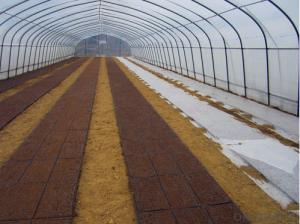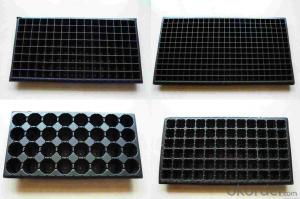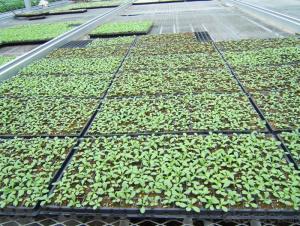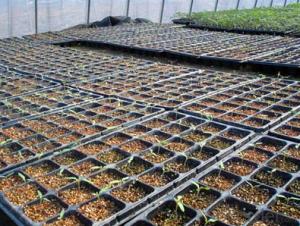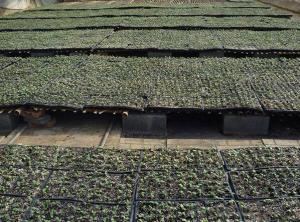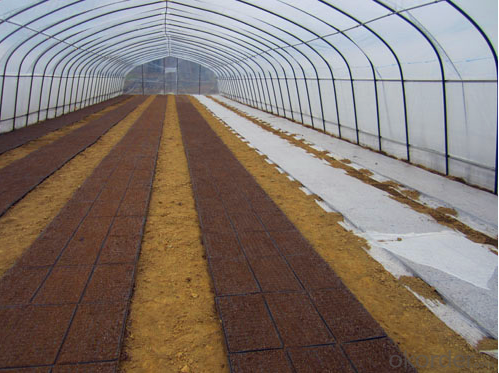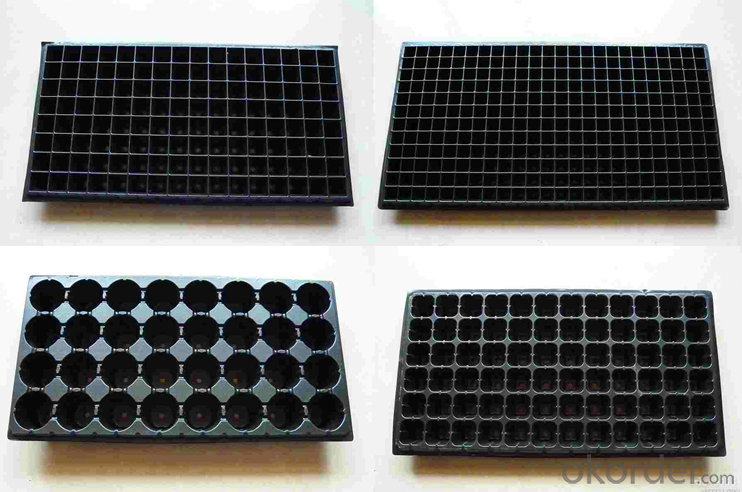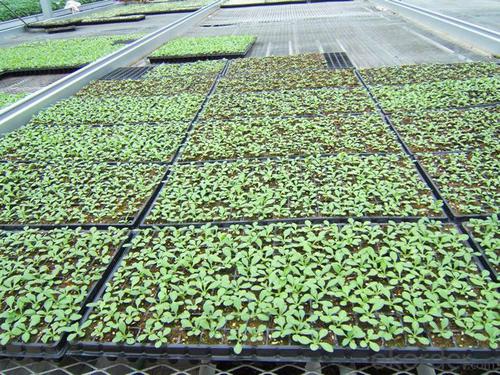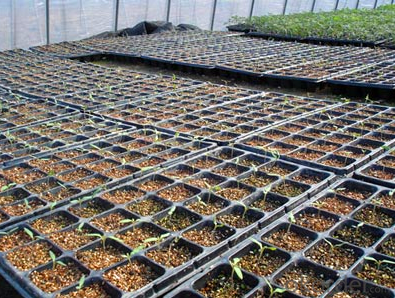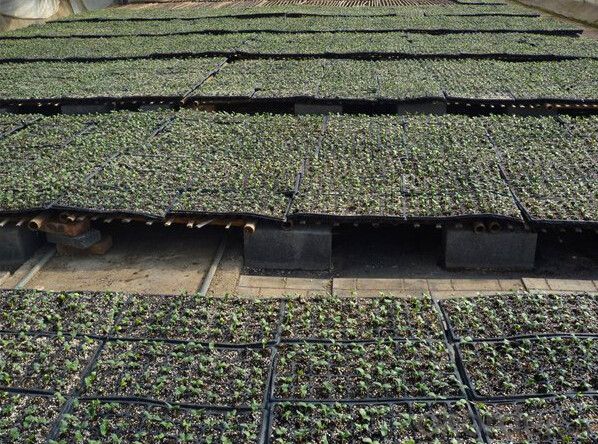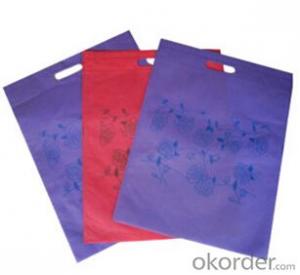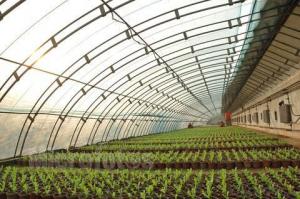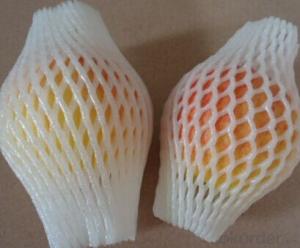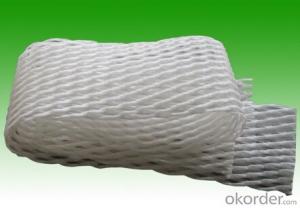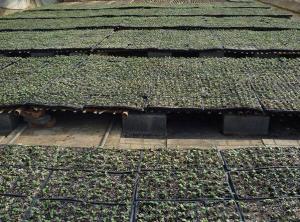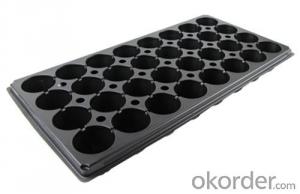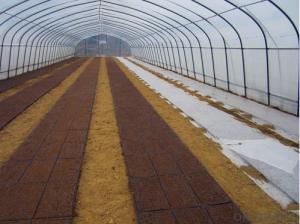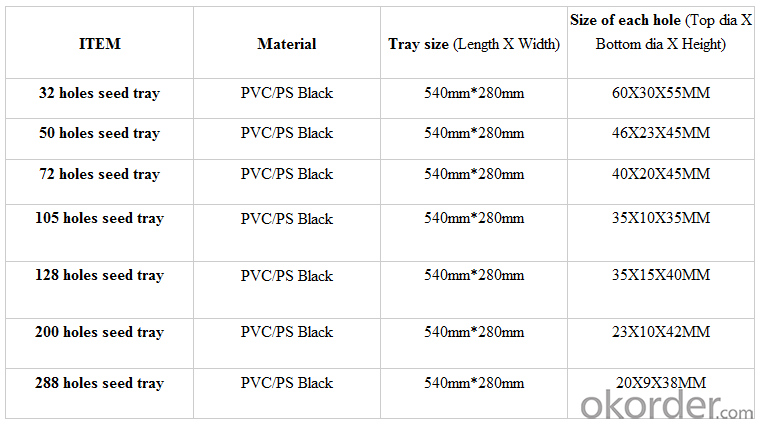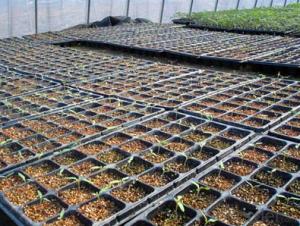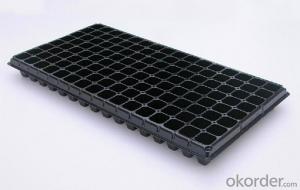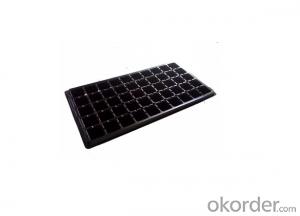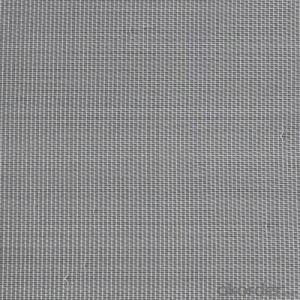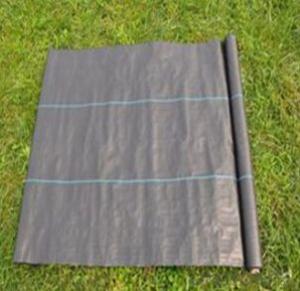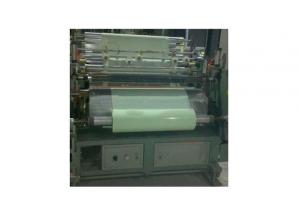72 Cells PS Seedling Tray,Seed Tray,Plug Tray
- Loading Port:
- China main port
- Payment Terms:
- TT OR LC
- Min Order Qty:
- 2000 pc
- Supply Capability:
- 2000000 pc/month
OKorder Service Pledge
OKorder Financial Service
You Might Also Like
Brief Introduction to CNBM:
CNBM International Corporation (CNBM International) is the most important trading platform of CNBM Group Corporation, a state-owned company under the direct supervision of State-owned Assets Supervision and Administration Commission of the State Council.
CNBM International is highly recognized by its business partners and clients all over the world and has obtained rapid development under the spirit of win-win. We will carry on the mutual beneficial, innovative and revolutionary trading structure as we did before, create value for our employees, share holders and clients and benefit the whole society in our future development.
Features:
Material: HIPS
Thickness: 0.5mm-1.5mm, Standard:1mm
Weight: 80g(±5)g-230g(±5)g, Standard weight:155g(±5)g
Size: length:490mm-540mm, width:190mm-345mm,depth:25mm-150mm
Standard:540mmX280mm
Cell count: 18-512
Package: In Carton
Warrenty: 8-10 times
Picture:
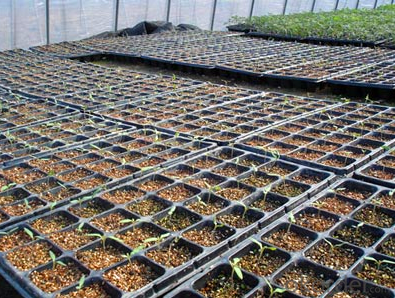


Specification:
FAQ:
Q:1.How many times can the seed tray be used?
A: Under the same environment, it is decided by the thickness. Usually 0.6mm thickness can be used for 1 or 2 times.
1.0 thickness can be used for 3-4 times. 1.5 thickness can be used for 8-10 times.
Q: 2.How long is the production time?
A: Usually one to two weeks.
Q: 3.How is the seed tray being packaged?
A: They can be packaged in carton or pallets. Carton size is 55cm*29cm*50cm.
- Q: A french horn but plastic.. not a toy. I have a plastic moutpiece but I'm looking for a horn.. either marching french horn or double horn. even single i guess. thanks.
- Sorry, there are none made. A full double horn is very complex and plastic just isn't the material to go with. You might be able to find plastic marching instruments in the future, but not yet.
- Q: Do nursery trays come with a cover to protect plants from extreme weather conditions?
- Yes, nursery trays often come with a cover to protect plants from extreme weather conditions. The covers help create a microclimate that shields the plants from harsh temperatures, wind, rain, and other adverse weather conditions, allowing them to grow and thrive.
- Q: When I bought a cage it had some toys 2 plastic perches and a swing I threw everything out but the swing and perches and I disinfected them I was wondering are the perches ok for my bird?
- Plastic perches are no good . they are to smooth, you need to get some wood ones or even tree branches , if possible from Apple .or Willow trees. Plastic perches do not allow the birds to grip correctly and can harm the feet , wood perches and branches are more natural, for your birds to get their claws around. Breeder
- Q: How do plastic irrigation filters assist in maintaining water quality?
- Plastic irrigation filters help in maintaining water quality by effectively removing sediment, particles, and other contaminants from the water before it is used for irrigation purposes. These filters act as a barrier, preventing any debris or impurities from entering the irrigation system, which could otherwise clog the pipes, nozzles, or emitters. By ensuring a clean water supply, plastic irrigation filters help to improve irrigation efficiency, promote healthier plant growth, and prevent potential damage to the irrigation equipment.
- Q: The plastic that is used for the coating of my ear bud chord is beginning to harden up from exposure to the sun. Once it hardens up it naturally becomes less flexible and I end up getting a short in the wire from normal wear and tear compared to how they are suppose to be. Is there anything I can do to re-soften the plastic (short of keeping them out of sun as I do that as much as possible already. Kinda hard when you live in desert climate) and then keep it that way?
- truthfully no longer authentic. there is not any way for the vinegar to penetrate the exterior and get to the bone. organic rubbish. in case you drop a chicken bone right into a glass of vinegar and pass away it there for each week, it is going to develop into rubbery---an old 'technology for babies' style of element. probably the place this loopy rumor began.
- Q: What types of plastic covers are used for hay stacks?
- There are various types of plastic covers that are commonly used for hay stacks, including polyethylene tarps, silage film, and bale wraps.
- Q: How does ground cover impact the growth of other plants?
- Ground cover can have a significant impact on the growth of other plants. It competes with them for resources such as sunlight, water, and nutrients, which can inhibit their growth. However, ground cover also provides benefits such as moisture retention, weed suppression, and erosion control, which can promote the growth of other plants by creating a more favorable growing environment. Ultimately, the specific impact of ground cover on other plants will depend on factors such as the type of ground cover, its density, and the specific needs of the plants involved.
- Q: How do you choose a ground cover that is resistant to weeds?
- When choosing a ground cover that is resistant to weeds, there are a few key factors to consider. Firstly, opt for dense and vigorous ground cover plants that can effectively crowd out weed growth. Low-growing options like creeping thyme, creeping Jenny, or vinca minor are known for their ability to suppress weeds. Additionally, selecting ground covers with thick foliage or dense root systems can create a barrier that inhibits weed growth. It is also important to choose ground covers that can thrive in the specific conditions of your garden, such as sunlight exposure, soil type, and moisture levels. Lastly, regular maintenance practices like mulching, proper watering, and periodic hand weeding can further minimize weed growth and help your chosen ground cover thrive.
- Q: I'm making a rabbit hutch and I#92; have strong plastic mesh, not the metal mesh. Would the rabbits chew through the plastic mesh? It's really closed mesh as well. Please answer :)
- A rat can chew by tremendously much something this is housed in different than severe steel twine cages and glass aquariums. (the only reason it won't be able to chew by aquariums is that it won't be able to get a the tooth carry on the glass! ) a similar is going for plastic...if the rat has NO way of having a the tooth carry, it cannt chew in the path of the stuff...yet any the tooth carry and the cage is historic previous. Please notice that rats ought to have issues to chew on, for their front tooth proceed to strengthen, compensating for positioned on and tear on the tooth. So, provide rats complicated issues to chew on and that they are going to probable be some distance much less attracted to going everywhere that doesn't have food...and their cage has a relentless furnish of food.
- Q: What are the advantages of using plastic honeycomb panels in beekeeping?
- One of the main advantages of using plastic honeycomb panels in beekeeping is their durability. Plastic panels are resistant to weather conditions, moisture, and pests, ensuring a longer lifespan compared to traditional wooden hives. Additionally, plastic honeycomb panels are lightweight, making them easier to handle and transport. They also provide excellent insulation, maintaining a stable temperature within the hive, which promotes bee health and honey production. Moreover, the uniform honeycomb design of the panels allows for easy inspection and harvesting, reducing stress on the bees and simplifying beekeeping tasks.
Send your message to us
72 Cells PS Seedling Tray,Seed Tray,Plug Tray
- Loading Port:
- China main port
- Payment Terms:
- TT OR LC
- Min Order Qty:
- 2000 pc
- Supply Capability:
- 2000000 pc/month
OKorder Service Pledge
OKorder Financial Service
Similar products
Hot products
Hot Searches
Related keywords
